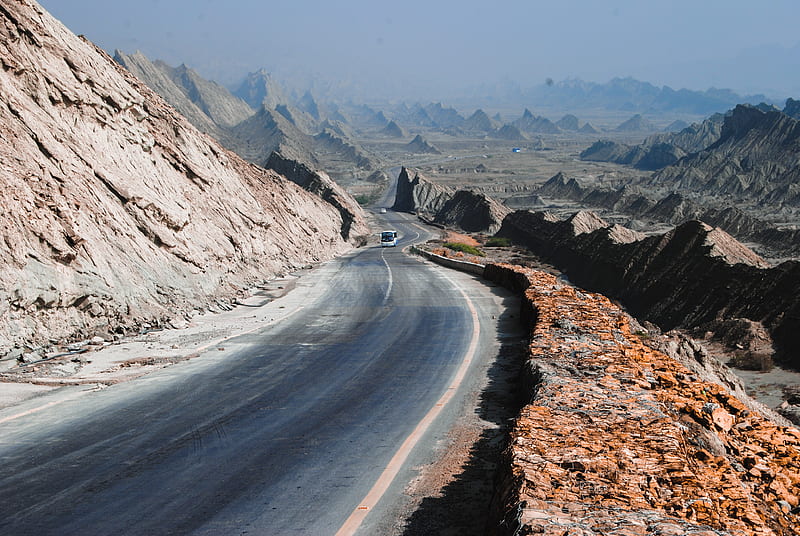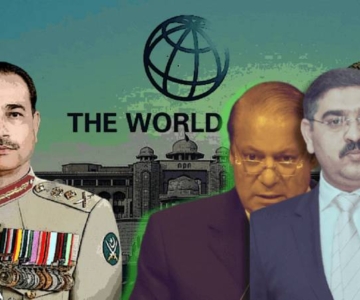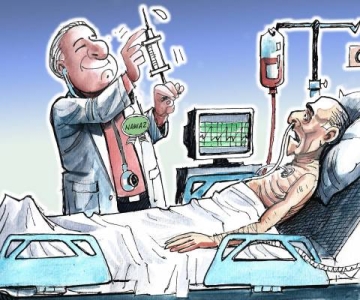There must be something terribly wrong with the state of Pakistan that in its largest province, state schools no longer recite the national anthem and are giving up on the Pakistani flag. Tragic, that such alarming reports flashed in the national newspapers and on the internet are a subject of little debate and introspection across the country. Either that nobody really cares as to what happens to the tribals in the southwest of Pakistan, or that there is soft censorship at play. Such is the level of self-censorship on the issue of Balochistan that the ongoing insurgency finds scant mention in the otherwise, hysterical electronic media of Pakistan. True, there are brave exceptions in the public arena, but the eerie silence on Balochistan is disturbing for any Pakistani who believes in the territorial and federal integrity of Pakistan.
Only during the last six months, dozens of Baloch political activists have been reported dead. It is difficult to ascertain exact numbers, given the lack of credible information. But palpable violence defines the state of Balochistan. On the one hand, there are Baloch activists, leaders and professionals who are being targeted by ‘unknown’ forces and on the other hand, thousands of ‘settlers’ (mostly Punjabis) have been leaving the province, as their lives are no longer secure. A wide array of Baloch separatist groups exist in the province, whose source of funding is unknown and whose political agenda is vague, despite the overall banner of ‘independence’.
The history of Balochistan is stymied by the imposition of a national narrative and its symbolic manifestation remains the refusal of the Khan of Qalat to accede to the new state of Pakistan in 1947. Thus, historical grievance has swollen to a degree where ‘Pakistan’, at least in the ‘Baloch’ districts, is now an imagined enemy to be countered with the narratives spun by the separatists. There is also the story of ‘exploitation’: from the inadequate (and perhaps misappropriated) Sui gas royalties, to the Gwadar port which is not under Baloch control; while the natural wealth of the province is perceived as being looted by ‘foreigners’.
Despite the turbulent history of the 1970s and powerful nationalist sentiments, the Mengals and Bugtis attempted to engage with Islamabad to achieve a respectable quantum of autonomy in the 1980s and 1990s. Unfortunately, Pakistan’s national politics and the ruling elites (largely from the Punjab and Khyber-Pakhtunkhwa) were busy with their own short-term agendas. Thus, the marginalization of the province continued as Pakistan failed to develop a viable model of economic development founded on trade and commerce which may have led to national integration of sorts.
Instead, our focus since the 1980s has been on the pursuit of bolstering a security state at the expense of people’s welfare and integration of marginalized communities into the mainstream development process. The Musharraf decade (1999-2008) reversed the earlier trends of Islamabad-Balochistan rapprochement and engagement. If anything, the Pakistan Army’s ruthless modernization project bypassed the Sardars, and the Baloch middle classes and instead, drummed up the bogey of ‘foreign intervention’. Worse, it elevated the crisis through the brutal murder of Nawab Bugti. It is an irony that Bugti was consistently a proponent of the Pakistani federation and had been an uneasy partner of Pakistan’s security establishment. However, his death signified the narrowing of the space available for dialogue, negotiation on autonomy and perhaps, reconciliation with a wounded territory.
It is also true that Balochistan is a playground for various external powers, including India and the United States to ‘punish’ Pakistan for its strategic adventurism in Kashmir and Afghanistan, respectively. Thus, the exiled tribal leaders from the Marri and Bugti clans may have found foreign benefactors in pursuing their separatist agenda. An unfriendly regime in Kabul sponsored by the US has not helped matters either, given that safe havens exist for the separatist elements and their leadership in Afghanistan. However, the Pakistani state and its various spokespersons (many of them riding the media tiger these days), have been unable to inform and educate public opinion on what sort of foreign intervention and financing networks exist in the Balochistan saga. In the absence of concrete evidence, many rational Pakistanis find it difficult to fully subscribe to the US or India ‘intervention-theory’, howsoever true it might be. Notwithstanding the challenges, blanket repression and targeting of Baloch activists is not going to lead us anywhere. Instead, such a strategy can only backfire as it is already paying no dividends to the country and its future.
The PPP-led coalition started off by tendering an unconditional apology to the Baloch. It even struggled to offer the ‘Aghaz-e-Huqooq-e-Balochistan’ package as an instrument of reconciliation. Three critical ingredients of this package were: a) recovery of ‘missing persons’ in the province; b) reduction of the arbitrariness of the federal security agencies such as the rangers; and c) providing employment to all graduates from the province. On all three fronts the PPP-led coalition alas, has not delivered. The missing persons remained missing or worse, dead. The provincial government is a dummy mediator as Balochistan continues to be ruled from Islamabad and its security apparatus. Finally, the implementation of the employment package has been far slower than expected.
It has been rightly pointed out that the civilian government is not in charge of Balochistan policy, as the province and its affairs are inextricably linked to the national security paradigm. After all, it is India that the Pakistan Army has to resist in the barren tracts of the province, and the Evil Empire and its stooges in Afghanistan, which have to be ‘countered’ effectively. Conspiracy analysts have also cited a Chinese dimension to the whole affair. But it remains unclear as to what extent China is interested or involved in the affairs of the province, except perhaps, its commercial interests and its search for energy trade routes.
So what are the prospects for Balochistan’s secession? Unlike East Pakistan, Balochistan is not an ethnically homogenous region. Thanks to the Afghan jihad and internal migrations in the region, the Pashtun population of the province has increased over the past three decades, almost rivaling the native Baloch. We cannot determine such facts in Pakistan, given the little respect for facts that we have. A census has been due for the past few years, but cannot be held for all sorts of reasons. However, if and when the census is held, we will find out the quantitative ethnic composition of the province in precise terms. More importantly, secession would require foreign intervention of the 1971 variety. Pakistan’s nuclear status simply precludes that. Few in the region or across the globe would want more instability in Pakistan, beyond current levels.
Therefore, the Balochistan quagmire has now moved beyond the domain of a federal dysfunction to a contest of regional politics. India, Afghanistan and indirectly, the United States are now additional stakeholders in the contest, whether we like it or not. Islamabad will have to pursue a three-pronged strategy. First, it will need to engage with Baloch leaders at a political level after a ceasefire of sorts is achieved. There could be multiple options for working out a range of solutions to maximize political and economic autonomy for the province within the federal framework. The scale of such autonomy cannot be equivalent to the current framework of the 1973 Constitution (amended umpteen times). It would need to be a national solution and hence, would require multi-party consensus on a type of autonomy for the Baloch people. This imperative cannot be further delayed and the PPP and the PML-N should take the lead, for their present and future governments will remain unstable if Balochistan cannot be governed constitutionally.
The second aspect of Islamabad’s strategy should be to resume dialogue with India and Afghanistan in the context of a regional settlement likely to occur in the short-term. The Baloch separatist leadership is not going to change its mind until regional powers such as India and the US agree to find a solution to this conundrum and abandon the ‘fix-Pakistan’ policy. Of course, Islamabad will have to make concessions and rein in its network of non-state actors.
Thirdly, while the above-stated strategies are implemented, the provincial government and its capacities need to be fixed immediately so that the perception of gross ineptitude, corruption and powerlessness is reduced. At present, the provincial government inspires little confidence among the provincial populace, let alone the angry Baloch.
Concurrent to what happens at the high-level strategic negotiations, Pakistani media and its civil society cannot abandon their duty to highlight the woes of all those Baloch who are being killed, tortured or abducted. We cannot remain insensitive sitting in Islamabad, Lahore or Karachi to what is happening in our country. Pakistan’s existentialist crisis is compounding, and the least we can do is to generate a healthy, informed debate on how to confront decades of marginalization and exploitation of a province that is our very own.
First published in The NEWS on Sunday on March 27, 2011
The writer is policy adviser based in Lahore. He blogs at www.razarumi.com and manages webzine pakteahouse.net. Email: razarumi@gmail.com



